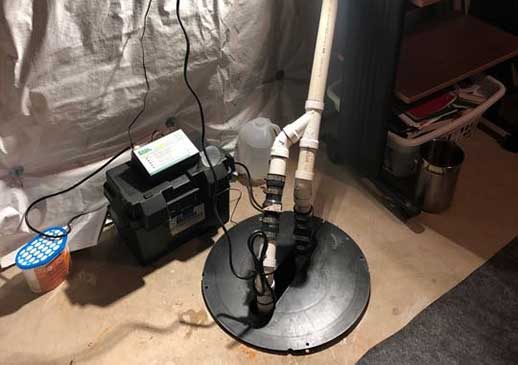
The only reason you have a sump pump in your home is so that you can sleep in peace or go to work and vacation without constantly worrying that a flood will damage your basement.
But this entire goal is defeated when your sump pump stops working, notes Orca Richmond Realty. Why do sump pumps fail, and how can you prevent the problems?
7 common causes of sump pump failure and how to avoid them
A stuck or faulty float switch
Your sump pump will not work if the float switch is stuck or faulty. The float switch activates or switches off the pump, depending on the volume of water inside the sump pit. If there is debris inside the pit, it can jam the float switch. The float switch can also fail if the pump has been jolted out of its position inside the basin, maybe due to excessive vibrations of the motor. To prevent this problem, ensure that debris does not accumulate inside the basin and the pump is securely fastened to prevent movements.
The sump pump is overworked
There are three common scenarios where your sump pump can be overworked. If the check valve is damaged, water that is pumped out of the basin will cycle back into the pit. As a result, the sump pit is never emptied. Your pump will also overwork if the sump basin is too small for the amount of water entering the basement. Lastly, a damaged float switch can leave your sump pump permanently in the “Power-on” position. These problems can be averted by inspecting and maintaining all components of the sump pump regularly, and ensuring that the sump basin is the right size for your home.
Electricity supply is cut off
Sometimes, a homeowner will forget to reconnect their sump pump after unplugging it to perform repairs or maintenance. When working with a sump pump, it is vital to follow a checklist and test if the pump is working after you are done. The second reason your sump pump loses power is a power outage in your area. That is common in regions that are subject to violent storms. To solve this second issue, install a battery-powered that will continue to work even after the power is cut.
A clogged or frozen discharge line
After being pumped out of the sump basin, water is expected to flow into the discharge line before being transported and released at a safe location on your property. This process will fail if the discharge line is clogged with debris, rocks, rodents, roots, or ice. Your sump pump will activate, but water inside the sump basin will not be removed, leading to a flood in your home. To prevent this problem, proper installation of the discharge line is essential. Additionally, a monthly inspection of the sump pump system will help you uncover any issues with your discharge line.
A clogged sump pump
Before entering your basement, floodwaters normally flow over bare earth. This water is loaded with dirt, and it is only natural that some debris will settle at the bottom of your sump basin. If this debris blocks the pump inlet or clogs its impeller, the sump pump will stop working. Two essential steps will help you avert this problem. Install a cover on your sump basin to minimize the amount of debris entering the pit. Secondly, when doing routine maintenance for your sump pump, thoroughly clean the sump basin and sump pump.
Installation problems
When buying and installing a sump pump system, you must have an accurate idea of the water volume that enters your home. It ensures that the sump pit and pump are the right size for the house. If there is a mismatch between the volume of your sump basin and the capacity of your sump pump, you will experience frequent sump failures. To avoid this problem, have an experienced plumber – familiar with your area’s weather – work with you when installing or re-installing your sump pump system.
The sump pump is old
No homeowner wants to hear it, but the time eventually comes when you must replace your sump pump. The typical sump pump has an average lifespan of 10 years. Depending on how it is maintained, the sump pump may or may not fail before it reaches this age. If your sump pump is near or at the end of its useful life, it is a good idea to replace it. An old sump pump can stop working suddenly without signs of impending failure.
Lastly, poor maintenance will make your sump pump more prone to failure. That’s because minor issues that should not affect your sump pump’s performance are allowed to escalate. In addition to regularly inspecting and cleaning the sump pump, you need a qualified plumber near you to service your entire sump pump system periodically.

